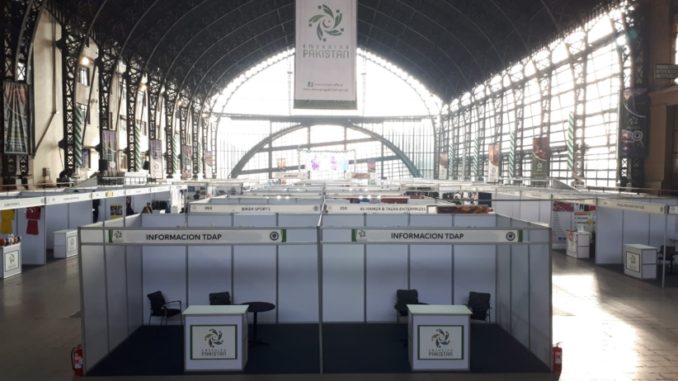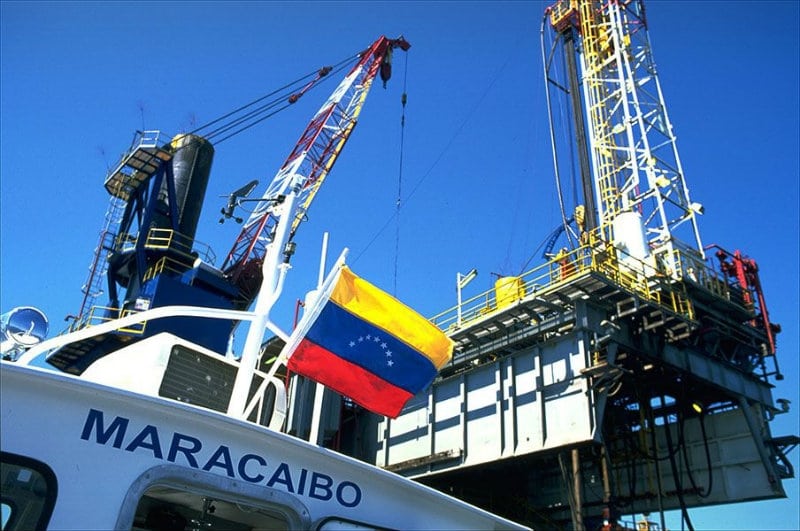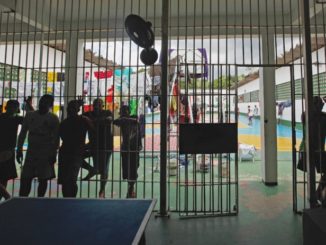
Mohsin Abbas/The Santiago Times Staff
SANTIAGO – Pakistan held its largest trade event in Chile, a major economy of South America, this week but couldn’t attract sufficient number of visitors which brought a loss of millions to dozens of businesses back home.
For past 10 months the Trade Development Authority of Pakistan (TDAP) had been preparing for a Single Country Exhibition at Estación Mapocho, Santiago, in collaboration with Ministry of Commerce & Textile (Commerce Division) and Embassy of Pakistan, Buenos Aires (Argentina).
The purpose of this first-of-its-kind event, which cost the country over PKR30 million (447,300 US$) , was to take ‘Emerging Pakistan’ forward and explore the Latin American markets.
However not more than a few hundred people visited dozens of stalls at the four-day expo, running between May 26-29.
Much to the disappointment of Pakistani community, especially the investors, the focal person for liaison and smooth conduct of business stood absent from the scene.

Traders from Sialkot and Karachi, two major industrial cities of the South Asian country, said they will complain to the higher authorities about the mysterious disappearance of Murtaza Siddiq Khan, the Commercial Counsellor at Pakistan’s Embassy in Argentina and the key person behind the event “at the end of the world”.
The Islamic Republic of Pakistan, a country in South Asia with a coastline on the Arabian Sea in south, is bordered by Afghanistan, China, India, and Iran.

Representatives from more than 20 companies of textile, agriculture, sports, surgical instruments, marbles, gems and jewellery, carpets and furniture, and beauty products participated in the single country trade exhibition.
However, the only attraction at the exhibition was the gastronomical booth featuring Paan, Paratha, and Biryani.
“We made huge efforts to reach here (Chile) but couldn’t get any customer traffic… Local officials [of Pakistan’s diplomatic staff], who organized this event, are neither cooperative nor helpful. Had our [own people] gave any support, we wouldn’t have faced this problem,” said Omer Malik, a top representative of a Sialkot-based surgical instruments company.
When asked if he had lodged any complaint with TDAP officials, the director of AAAZ said “juniors would never take a complaint against their seniors”. He also shared his concern about the absence of top diplomatic officials.
TDAP officials, on the other hand, acknowledged it was not good enough already and admitted their mistakes. “This was our first attempt, and we have explored best possible options. However, we make mistakes and learn from them to further improve,” said Farooq Memon, a director of TDAP. He, however, insisted “it was not all bad”.

Pakistan’s Commerce ministry says it recognizes ‘the immense trade potential’ of the South American region and has taken steps to enhance trade with South American countries and Mercosur as a bloc – the fifth largest economy in the world today with a GDP of $2.7 trillion.
However, Pakistan’s imports from South American countries continue to outweigh its exports to the region, with a deficit of over $103 million registered during July-December last year.
Pakistan’s trade volume with the South American region had hovered around $600 million since FY2014-15, except FY2015-16 when the volume was recorded at $769.725 million.
Within the Mercusor, Pakistan’s largest trading partners have been Argentina and Brazil with bilateral trade volume at $160.894 million and $251.18 million, respectively, for fiscal year 2016-17, as per the State Bank of Pakistan (SBP) figures.
Last December, Chile agreed to sign a free trade agreement (FTA) with Pakistan within six months which would enable the South Asian country to enhance exports of its textiles, leather, surgical and sports goods to the South American country under the proposed FTA.
But, according to the ministry, a lack of consensus within Latin American nations prevails on signing a preferential trade agreement (PTA) with Pakistan amid the restriction to market access of textile products to protect the domestic industry.



